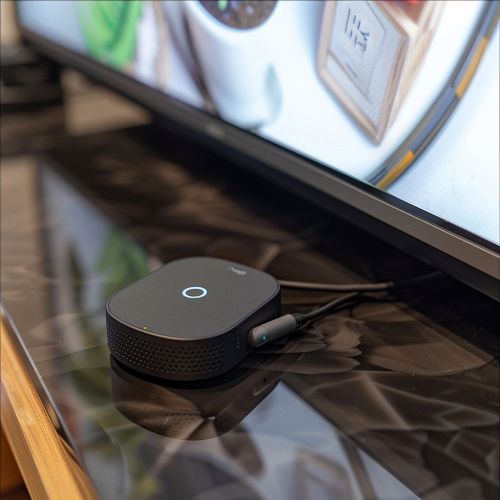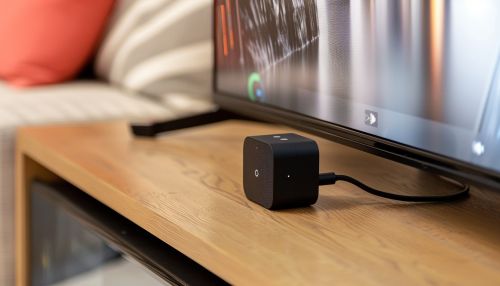Google Cast
Overview
Google Cast is a proprietary protocol developed by Google that enables users to stream multimedia content from their devices to compatible hardware, such as televisions, speakers, and displays. The technology was first introduced in July 2013 with the launch of the Chromecast dongle, which allowed users to cast content from their mobile devices or computers to their TV screens. Since then, Google Cast has evolved to support a wide range of devices and applications, becoming a key component in Google's ecosystem of smart home and entertainment products.
History
The development of Google Cast began as part of Google's efforts to enhance the user experience in the realm of digital media consumption. The initial release of the Chromecast device marked a significant milestone, providing an affordable and straightforward solution for streaming content to televisions. Over the years, Google has expanded the capabilities of Google Cast, integrating it into various products such as Google Home, Nest Hub, and third-party devices from manufacturers like Sony, LG, and Vizio.
Technical Specifications
Google Cast operates over a local Wi-Fi network, utilizing the DIAL (Discovery and Launch) protocol for device discovery and communication. The protocol supports a variety of media formats, including H.264, VP8, MP3, AAC, and WAV. Google Cast devices are equipped with a built-in receiver application that handles the streaming and playback of content, ensuring a seamless user experience.
Architecture
The Google Cast architecture consists of three main components: 1. **Sender Device**: This is the device from which the user initiates the casting process. It can be a smartphone, tablet, or computer running a compatible application. 2. **Receiver Device**: This is the device that receives and plays the casted content. It can be a Chromecast dongle, a smart TV with built-in Google Cast support, or a Google Home speaker. 3. **Cloud Services**: Google Cast leverages cloud services for content delivery, ensuring that the media is streamed directly from the internet to the receiver device, minimizing latency and buffering issues.


Functionality
Google Cast offers a range of functionalities that enhance the user experience, including:
Casting
Casting is the primary function of Google Cast, allowing users to stream content from their devices to a compatible receiver. This can include video, audio, and even screen mirroring. The casting process is initiated by selecting the cast icon within a compatible application, which then prompts the user to choose a target device.
Multi-Room Audio
Google Cast supports multi-room audio, enabling users to synchronize playback across multiple speakers and devices. This feature is particularly useful for creating a cohesive audio experience throughout a home or office environment.
Voice Control
With the integration of Google Assistant, users can control Google Cast devices using voice commands. This includes playing, pausing, and skipping content, as well as adjusting volume levels and switching between different media sources.
Compatibility
Google Cast is compatible with a wide range of devices and applications, making it a versatile solution for media streaming. Some of the key compatible devices include:
Chromecast
The Chromecast line of devices is the most well-known implementation of Google Cast. These dongles connect to a television's HDMI port and allow users to stream content from their mobile devices or computers.
Smart TVs
Many modern smart TVs come with built-in Google Cast support, eliminating the need for an external dongle. Brands such as Sony, LG, and Vizio offer models with integrated Google Cast functionality.
Smart Speakers
Google Home and Nest speakers are equipped with Google Cast, enabling users to stream audio content directly to these devices. Additionally, third-party speakers from brands like JBL and Sony also support Google Cast.
Applications
Google Cast is supported by a wide range of applications, including popular streaming services, music players, and productivity tools. Some notable applications that support Google Cast include:
Streaming Services
- **Netflix**: Allows users to cast movies and TV shows to their television. - **YouTube**: Enables casting of videos from the YouTube app or website. - **Spotify**: Supports casting of music to compatible speakers and devices.
Music Players
- **Google Play Music**: Offers casting of music libraries and playlists. - **Pandora**: Allows users to cast personalized radio stations.
Productivity Tools
- **Google Slides**: Supports casting of presentations to a larger display. - **Google Photos**: Enables casting of photo albums and slideshows.
Security and Privacy
Google Cast incorporates several security and privacy measures to protect users' data and ensure a secure streaming experience. These measures include:
Encryption
All communication between sender and receiver devices is encrypted using industry-standard protocols, such as TLS (Transport Layer Security). This ensures that data transmitted over the network is protected from unauthorized access.
Authentication
Google Cast devices require authentication before they can be accessed by sender devices. This typically involves entering a PIN code or connecting to the same Wi-Fi network as the receiver device.
Data Privacy
Google Cast adheres to strict data privacy policies, ensuring that user data is not shared with third parties without consent. Users have control over their data and can manage their privacy settings through their Google account.
Development and Integration
Google provides a comprehensive set of tools and resources for developers to integrate Google Cast functionality into their applications. The Google Cast SDK (Software Development Kit) includes libraries, APIs (Application Programming Interfaces), and documentation to facilitate the development process.
Google Cast SDK
The Google Cast SDK is available for multiple platforms, including Android, iOS, and web applications. It provides developers with the necessary tools to implement casting capabilities, such as discovering and connecting to receiver devices, controlling playback, and handling media streams.
Receiver Applications
Developers can create custom receiver applications to enhance the user experience on Google Cast devices. These applications run on the receiver device and handle the playback of casted content. Google provides templates and sample code to help developers get started with building receiver applications.
Future Developments
Google continues to innovate and expand the capabilities of Google Cast, with ongoing developments aimed at improving performance, compatibility, and user experience. Some potential future developments include:
Enhanced Performance
Google is working on optimizing the performance of Google Cast, reducing latency and buffering times to provide a smoother streaming experience. This includes improvements to the underlying protocols and network handling.
Expanded Device Support
As the smart home ecosystem continues to grow, Google aims to expand the range of devices that support Google Cast. This includes partnerships with additional hardware manufacturers and the development of new Google Cast-enabled products.
Advanced Features
Future updates to Google Cast may introduce advanced features, such as improved multi-room audio synchronization, enhanced voice control capabilities, and support for new media formats and codecs.
